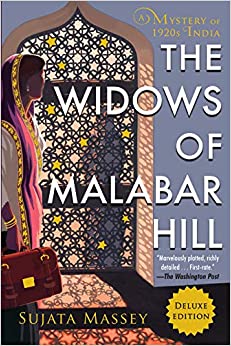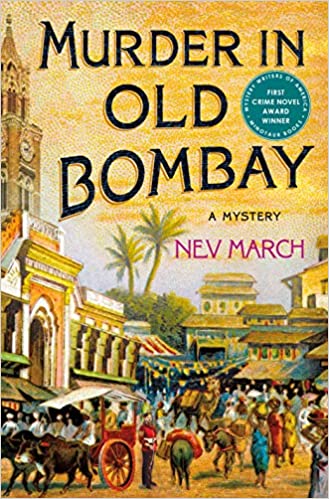In 1920’s Bombay, Perveen Mistry is the only female lawyer in the city. She is working with her father at the Mistry law office when a question comes up about the trust for the three widows of Omar Farid. First, the family’s agent Mr. Mukri says the widows want to change the purpose of the trust from support of veterans to the establishment of a madrassa. Further, the wives are giving up their mahr (sort of a dowry) to the trust. That may not be allowed by law. But Perveen also notices that the signatures of two of the women appear to be the same. Since the women are living in purdah, Purveen talks her father into allowing her to interview the wives.
When Perveen visits the wives, she finds Mr. Mukri rude and uncooperative and only Sakina, the second wife, understands and agrees with the requested changes. Sakina is shocked to find out that Razia, the first wife, is the administrator of the trust. Razia is unaware that Mr. Mukri has filed for a change in the purpose of the trust, but she is clearly afraid of him. Perveen also finds out that the agent has not been paying the household’s bills and that the third wife, Mumtaz, is trying to hide a pregnancy from the rest of the household. Perveen believes Mukri is mishandling the estate’s funds.
This novel is being marketed as a mystery, but it is about 80 pages before Perveen goes to see the women and 120 before a murder is committed. That is mostly because Massey devotes about half the novel to Perveen’s personal life, particularly her brief marriage. It seems to me that she could have accomplished what she needed to do in a few paragraphs or a chapter, because we don’t invest much in this relationship. Perveen is afraid of her ex-husband at the beginning of the novel, but the reasons could be explained in a lot less space.
Massey does a good job of giving the feel of the indoor spaces and food and costume, but I didn’t get a good sense of what Bombay was like at this time, something that I look for in a novel set in an exotic location or other time. And, in fact, Perveen’s visit to Calcutta for the first time is an excellent opportunity to describe that city, but there is no description.
At first, too, I thought I was going to object to Perveen being too much out of her time, for I really dislike historical novels where the heroines behave more like they live in the present. This particularly bothered me in the section about Perveen’s romance, but as the novel continued, it stopped being an issue.
This is not a mystery, however. Perveen pokes around a bit, but the solution just depends on her being in the right place at the right time. It is her father who actually finds the most important clues. So, overall I was disappointed in this novel.



